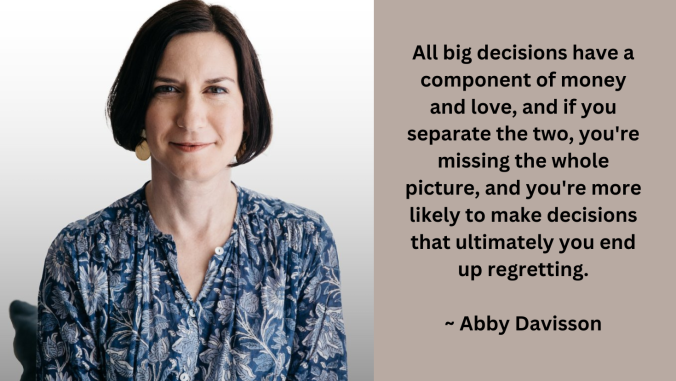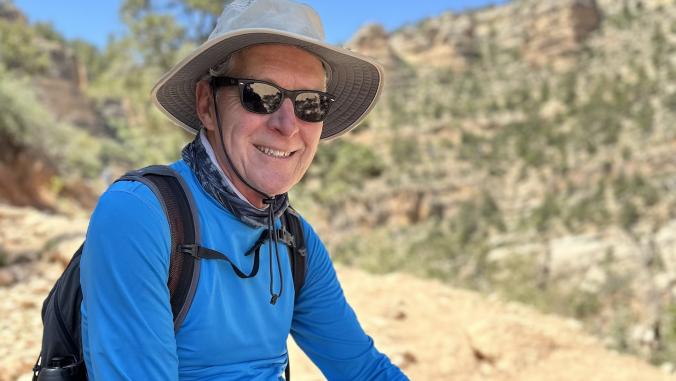Why we have to learn to embrace volatility and change
Leith Sharp of Harvard's Chan School of Public Health provides an insightful new framework for carrying out effective change.

I have written quite regularly about our VUCA (volatility, uncertainty, complexity and ambiguity) world and how this relates to the sustainability professional. Change is hard. Navigating it is necessary for success.
Leith Sharp, director of Executive Education for Sustainability Leadership, Center for Health and the Global Environment at the Harvard Chan School of Public Health, teaches that leaders need to embrace that change is nonlinear. In fact, "there is only squiggle" when it comes to transforming organizations.
As the founder of Harvard’s Office for Sustainability, Sharp gained first-hand experience with the barriers to organizational change. Back in 2001, a simple lighting upgrade project at the university, for example, could take her team three months of constant facilitation. Hierarchies, disparate funding streams and convoluted decision-making processes stymied progress.
We can’t change unless we first know where we stand.
But after eight years of deep change leadership, Harvard went from "nowhere on sustainability" to integrating sustainability into its core operations and culture, announcing back in 2008 that "green is the new crimson" (crimson being Harvard’s color), according to Sharp.
Change took time because even a small effort required accounting for many elements: technology; funding; time and attention; communication and negotiation; approvals; aesthetics; politics; training; and project management.
Sharp said effective change requires merging the best qualities of an agile startup (energy, creativity, drive) with the operational excellence of a mature firm. It requires recognition and balance of two distinct organizational "operating systems." And for this balance to be achieved, we need the deep engagement of senior leaders to think differently about organizational agility.
Since 2009 Sharp has curated a productive thought partnership experiment with literally thousands of people to get at the question of senior leadership engagement in driving organizational agility.
This enterprise has resulted in the co-creation of a powerful new organizational model, lexicon and learning lab to activate and connect organizational leaders that are ready to increase the speed at which they are able to drive sustainability into their core mission and business. This model activates purpose, creativity, engagement and something she calls idea flow, while also increasing the ability to de-risk change and ensure stability in core business and operational functions.
In Sharp’s framework, which she has open sourced, the adaptive operating system is the passionate, galvanized mentality that’s driven to align with internal team values and social needs. By contrast, the command control operating system is driven to align with the organization’s extrinsic mission and goals. Both perspectives play essential roles in organizational change.
Effective change leadership is about creating stability just as much as it’s about creating change.
The adaptive operating system works through a new idea with collaborative innovation, project piloting and peer-to-peer exchange. The command operating system works through the integration of that new idea into existing structures and processes.
If one operating system dominates, social and operational frictions arise. Minimizing this friction is essential to driving change.
Key strategies for reducing the risk of social and political frictions from mounting, effective change agents will leverage peer-to-peer influence building social support for sustainable projects and eventually broadened the buy-in of the formal command control leaders by first socializing and de-risking the new ideas with the support of early champions.
So what are the essentials to managing change effectively? From Sharp’s example and presentation, I think three lessons are crucial:
1. Merge purposes
Purpose is directionality — an orientation — that ideas help teams execute, said Sharp. Focusing on purpose forces leadership (the command OS) to answer the most important questions — where are we heading, and why? The answers should fit authentically with the needs of the living, changing organization — the adaptive OS — so it can innovate ideas to serve that purpose.
2. Build social support
According to Sharp, one of the biggest potential impediments to change is social. Feeling psychologically safe to fail is important in encouraging employees to innovate, share and take risks. When teams are comfortable and invited to contribute, they can become internal advocates for the change you seek for your organization.
Sharp gave examples of how highly successful sustainability professionals such as Cindy Ortega, Senior VP and CSO of MGM Resorts International, use myriad effective ways to diagnose all the potential risks posed by any new idea, systematically addressing each risk through conversation and piloting until a critical mass of shared purpose and ownership is established among all key stakeholders. At this point, the idea flows into full implementation.
3. Stabilize for success
Effective change leadership is about creating stability just as much as it’s about creating change, said Sharp. Without shared purpose or social unity, change is nearly impossible.
It first requires a stable environment from which to deviate — the more stable an organization, the more potential for change, said Sharp. In other words, we can’t change unless we first know where we stand.
Sustainability won’t be forced — people change when the context compels and enables them to, not merely when they are told to change.
Copenhagen, where Sharp gave a presentation at the recent Sustainable Brands conference, illustrates this principle. Over 50 percent of people commute by bike because the infrastructure enables them to, not necessarily because it’s better for the environment or their health. Biking is simply the most efficient way of travel throughout the city.
Making the best choice also the easiest and most efficient choice, is the holy grail of sustainable business. In most organizations, a lot of change is needed to make this happen. What about in yours?





